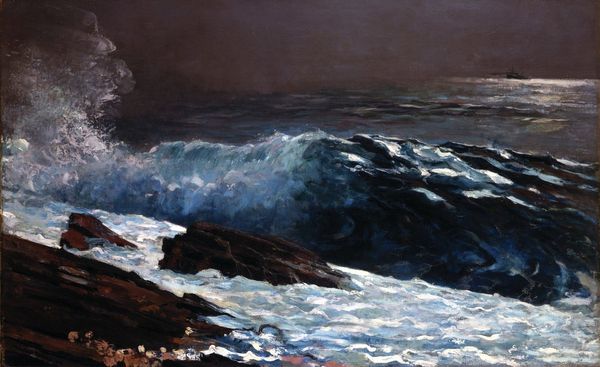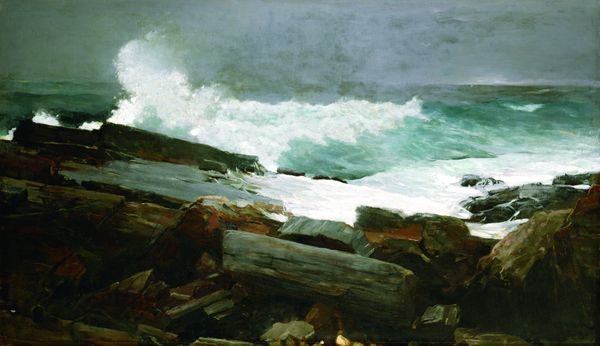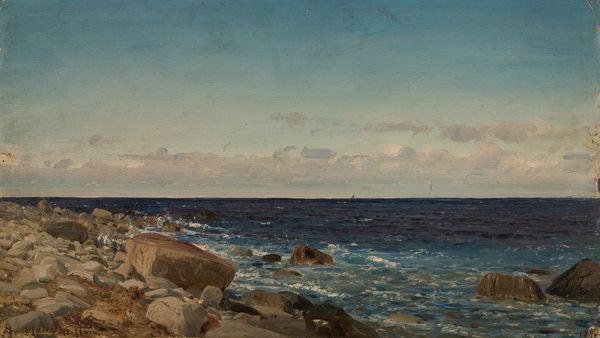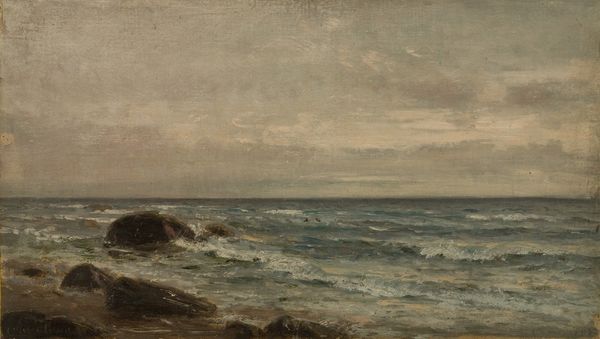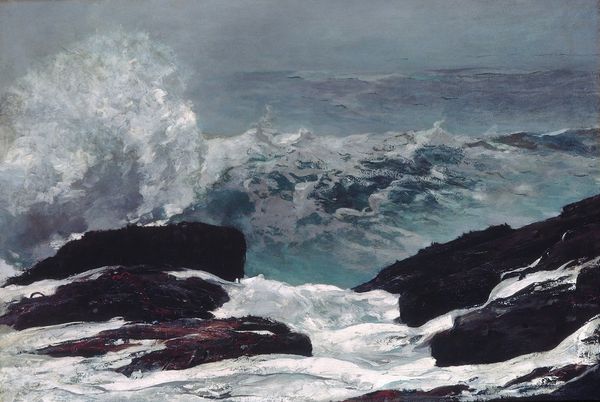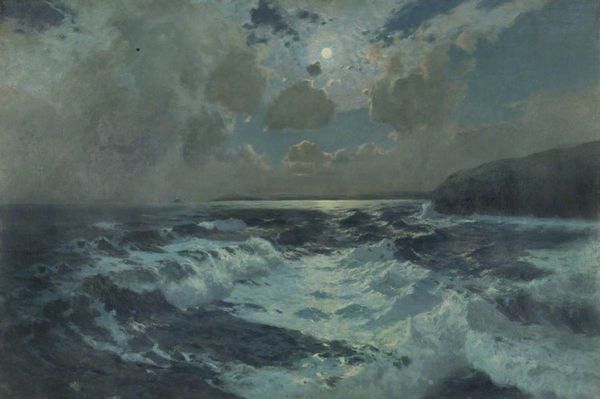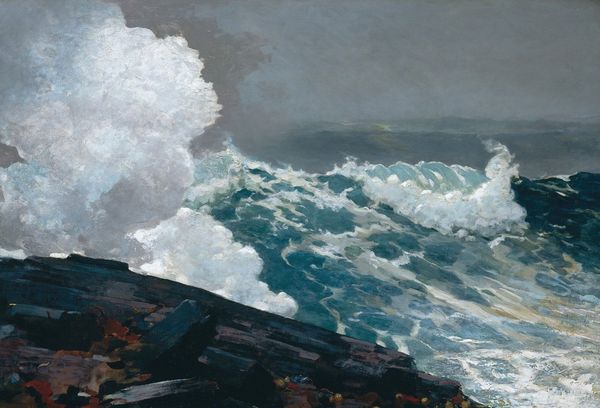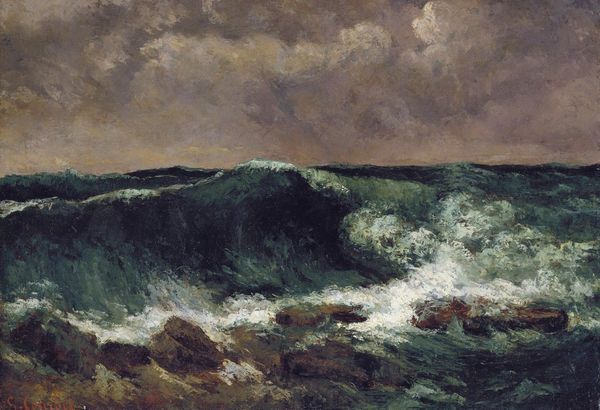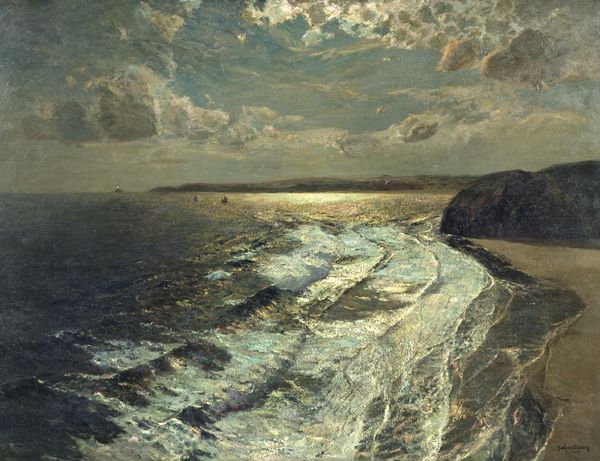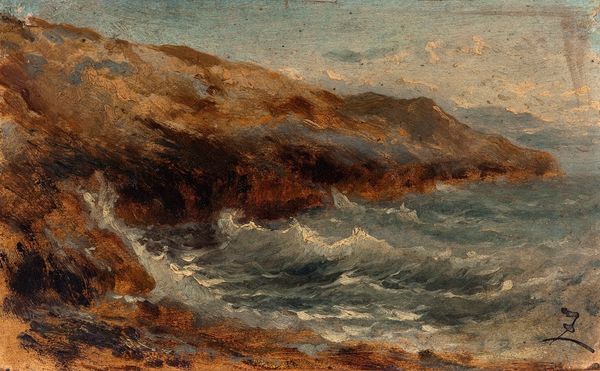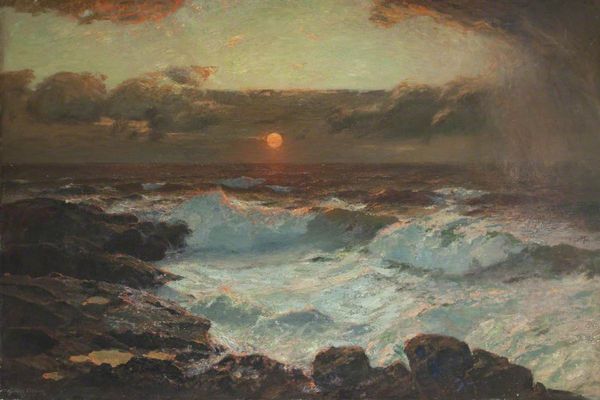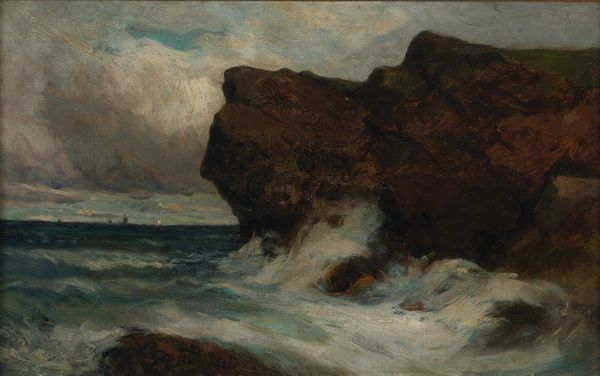
Copyright: Public Domain: Artvee
Winslow Homer created this painting, Moonlight, Wood Island Light, using oil on canvas. The painting’s dominant effect is of a chiaroscuro of light and dark that dramatically captures the sea at night. Homer’s composition is structured around the contrast between the dark, almost black rocks in the foreground and the radiant moonlight reflecting on the water. This strong contrast isn't just visual; it's a play on binaries, light and dark, safety and danger, presence and absence, suggesting a deeper meditation on the human condition. The artist isn't simply painting what he sees but constructing a field of meaning through these contrasts. Consider how the brushstrokes function here. Thick and visible, they build a surface that is as much about the materiality of paint as it is about representation. Homer uses the visible brushstroke to challenge the illusionism that had dominated painting for so long. Ultimately, the painting invites us to consider how the formal elements of art can be charged with cultural and philosophical significance. It's not just a depiction of a night scene, but a space where perception, meaning, and the very act of painting itself are brought into question.
Comments
No comments
Be the first to comment and join the conversation on the ultimate creative platform.
